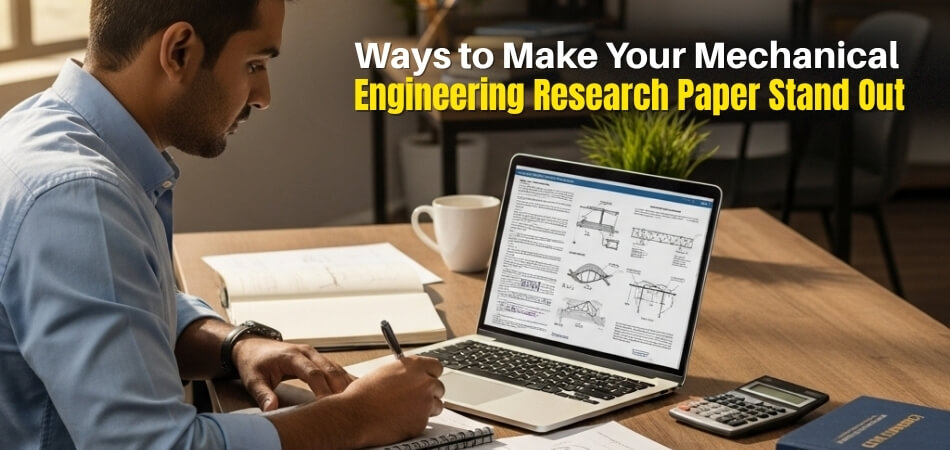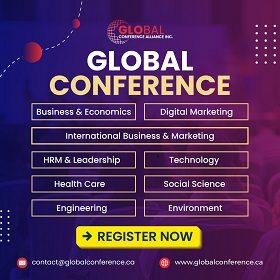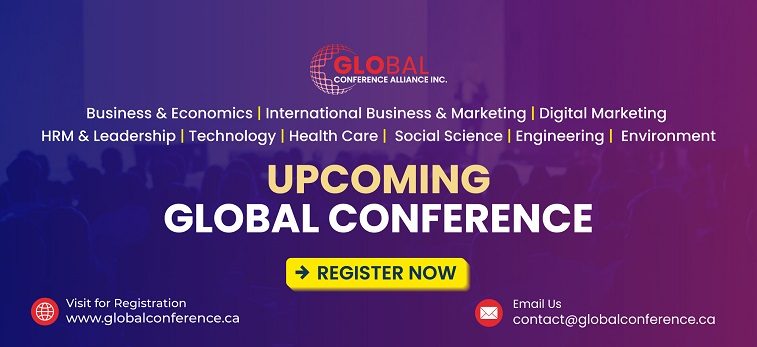Writing a mechanical engineering research paper can be tough. Many students worry about making their work stand out from the rest. Good papers are easy to read and show why the topic matters. But not every paper gets the attention. So, how can you make your paper stand out?
To help your mechanical engineering research paper stand out, try focusing on a fresh and important topic, strong methods, and real-world results, the problem and its impact, high-quality visuals and media, and a simple and well-organized presentation. These steps can make your work easier to understand, more engaging, and more likely to get noticed.
If you want to learn the details of these 5 ways to make your mechanical engineering research paper stand out, keep reading the whole article. We’ve covered each of these in detail.
5 Ways to Make Your Mechanical Engineering Research Paper Stand Out
Writing a great research paper in mechanical engineering doesn’t have to be confusing or hard. With a few helpful tricks, your work can get more attention and interest from readers. Here are 5 ways to make your mechanical engineering research paper stand out and make your ideas shine.
1. Pick a Fresh and Important Topic
- Choose a problem that people in the field care about right now; don’t pick something outdated or too general.
- Make your topic narrow enough so you can explain it well, instead of trying to cover too much at once.
- Try to find a gap in what others have researched and show why your idea adds something new.
- Share why your topic matters for real people or companies, so readers see its true value quickly.
2. Show Strong Methods and Real-World Results
- Explain every step of your method clearly, so readers understand exactly what you did from start to finish.
- Use experiments, prototypes, or real tests when you can; simulations alone don’t always show the whole picture.
- Point out how your work solves an actual problem that people face, instead of just being interesting on paper.
- Talk about how your results could be used outside the lab, in jobs, factories, or even everyday life.
3. State the Problem and Impact Clearly
- Write a simple sentence explaining what problem your paper tries to solve and why it’s important to fix.
- Give enough background information so readers can see how your work is different from what others have done.
- Use the latest research to show where your paper fits into the bigger picture, not just old sources.
- Highlight what’s new in your idea or results and explain how it could help change the field for the better.
4. Add Your Own High-Quality Visuals and Media
- Create your own diagrams, figures, or photos; don’t just use pictures found online or in other papers.
- Use a simple graphical summary to show your main idea or process, which helps readers learn much faster.
- If possible, include short videos showing your experiment or results, making your paper more engaging and fun.
- Write clear, easy captions for each image so readers understand what each picture is showing at a glance.
5. Make Your Paper Simple to Read and Well Organized
- Write short, direct sentences and avoid using hard words or too much engineering jargon when you can.
- Arrange your paper in a clear order: start with the problem, explain your method, show your results, and end with your thoughts.
- Double-check that every section leads smoothly into the next, making it easy for readers to follow your ideas.
- Finish by saying how your work could help future research or improve real products, showing the bigger impact.
How to Choose a Relevant and Original Topic for Your Research Paper?
Sometimes picking a topic for your research paper feels confusing and stressful. You might not know where to start or what to choose. Many topics seem interesting, but you want one that really matters. Don’t worry, because with a few easy steps, you can find a topic that fits you well.
Know Your Interests
Think about the parts of mechanical engineering that you enjoy the most. Maybe you liked a project at school or learned something fun in class. Choose something that you feel excited about, so working on the paper feels less like a chore. If you already have some skills in this area, that’s even better. It helps if the topic is both fun and something you want to learn more about.
Watch New Trends
It’s good to keep up with what’s new and popular in engineering. Check out recent magazines, online news, and engineering websites to see what people are talking about. Ask your teachers or classmates if they have heard of any new ideas or challenges. Sometimes, talking to others gives you good clues about fresh topics. You can also join online talks or school events to learn about the latest trends.
Check Real-Life Use
Pick a topic that matters in the real world, not just in books. Think about how your topic could help people, solve problems, or improve things around you. You can talk to family members or even teachers about what they think is important. Try to match your topic with big issues like protecting the environment or making things work faster. If you ever need ideas, you can look at big events or conferences happening in different countries like India, Germany, or even upcoming conferences in USA to see what engineers are working on.
Make Sure It’s Unique
Before you settle on your topic, see if it’s something new and not overdone. Search online or check your school library to find out what others have already studied. If you find lots of papers on the same idea, try to add a twist or pick a different angle. Being original makes your work special and helps you stand out. It’s always cool to offer a fresh point of view.
See If It’s Possible
Think about how you will do your research before you start. Make sure you have the books, tools, or help you need to finish your paper. If you need special equipment, check if your school has it or if you can get it easily. Try to pick something you can finish in the time you have. Choosing a simple, doable topic is always smarter than picking something too big.
Think About the Future
Your topic can help you in the future, too. If you dream about working in a certain job or company, choose a topic that matches that goal. Sometimes, research papers that fit with popular journal themes or conference ideas can get noticed more. If you want to work in a factory or in design, pick a topic that shows your interest in those areas. Your paper can open new doors for you if you plan well.
How to Develop a Compelling Research Paper Structure?
Creating a compelling research paper structure for a mechanical engineering conference paper ensures clarity, logical flow, and impact. Below is a concise guide to structuring your paper effectively, fitted to mechanical engineering contexts:
Title
- Purpose: Create a concise, descriptive title that captures the essence of your research and grabs attention.
- Tips: Use specific keywords (e.g., “Topology Optimization” or “Thermal Management”) to reflect your topic. Avoid vague terms. Example: “Optimizing Heat Transfer in Electric Vehicle Batteries Using Phase-Change Materials.”
- Length: Aim for 10–15 words, adhering to conference guidelines.
Abstract
- Purpose: Summarize the paper’s objective, methods, results, and significance in a clear, engaging way.
- Tips:
- State the problem (e.g., inefficiencies in HVAC systems).
- Briefly describe your approach (e.g., CFD simulations).
- Highlight key findings and their impact (e.g., 20% efficiency improvement).
- Keep it within 150–250 words, per conference requirements.
- Example: An abstract for a paper on additive manufacturing might outline the problem of material waste, your novel design approach, and achieved cost reductions.
Introduction
- Purpose: Set the stage by introducing the problem, its relevance, and your research objectives.
- Tips:
- Start with context (e.g., the need for lightweight aerospace materials).
- Highlight the research gap or industry challenge.
- State your objective and contribution (e.g., “This study proposes a new composite material for turbine blades”).
- Include a brief paper outline.
- Keep it to 1–2 pages.
Literature Review
- Purpose: Establish the context by summarizing existing research and identifying gaps your work addresses.
- Tips:
- Cite recent, relevant studies from journals like ASME Transactions or Journal of Mechanical Design.
- Highlight limitations in prior work (e.g., “Current thermal models neglect transient effects”).
- Position your research as a novel solution.
- Use 0.5–1 page, depending on the paper length.
Methodology
- Purpose: Detail your research approach to ensure reproducibility and credibility.
- Tips:
- Describe your methods (e.g., finite element analysis, experimental setup, or machine learning algorithms).
- Specify tools, materials, or software (e.g., ANSYS for simulations, 3D-printed prototypes).
- Include equations, diagrams, or schematics for clarity (e.g., heat transfer equations).
- Justify your approach and its suitability.
- Aim for 1–2 pages, with clear subsections (e.g., Experimental Setup, Simulation Parameters).
Results
- Purpose: Present your findings objectively, supported by data.
- Tips:
- Use visuals like graphs, tables, or heat maps to display results (e.g., stress distribution in a mechanical component).
- Avoid interpretation here; focus on raw data (e.g., “The new design reduced vibrations by 15%”).
- Ensure visuals are clear, labeled, and referenced in the text.
- Typically 1–2 pages, depending on data complexity.
Discussion
- Purpose: Interpret results, compare with prior work, and highlight implications.
- Tips:
- Explain the significance of findings (e.g., how your cooling system improves EV battery lifespan).
- Compare results with literature (e.g., “Unlike Smith et al. [2023], our model accounts for dynamic loads”).
- Address limitations (e.g., “This study is limited to small-scale prototypes”).
- Suggest practical applications or future research.
- Use 1–2 pages.
Conclusion
- Purpose: Summarize key findings, contributions, and future directions.
- Tips:
- Restate the problem, your solution, and its impact concisely.
- Highlight novelty (e.g., “This is the first study to integrate AI in turbine optimization”).
- Suggest next steps (e.g., “Future work will explore scalability in industrial settings”).
- Keep it to 0.5–1 page.
References
- Purpose: Cite all sources accurately to support your work and avoid plagiarism.
- Tips:
- Follow the conference’s citation style (e.g., ASME, IEEE, or APA).
- Include peer-reviewed journals, conference papers, and credible sources.
- Use reference management tools like Zotero or EndNote for accuracy.
Appendices (Optional)
- Purpose: Include supplementary material like detailed calculations or raw data.
- Tips:
- Use for non-essential but useful information (e.g., extended CFD simulation data).
- Ensure it’s referenced in the main text.
Selecting a compelling topic for a mechanical engineering conference paper drives expertise, career growth, and innovation. When you submit a research paper to a mechanical engineering conference, you increase your visibility and expand your professional network. By addressing research gaps and industry needs, your work stays relevant and helps advance knowledge at conferences.
How to Improve Your Paper With Strong Data and Simulations?
Improving a mechanical engineering conference paper with strong data and simulations enhances its credibility, impact, and appeal to a technical audience. Below is a concise guide to achieving this, tailored to mechanical engineering contexts:
Source High-Quality Data
- Utilize Reputable Sources: Use data from peer-reviewed journals, industry reports, or established databases (e.g., NIST for material properties, ASME for standards). For example, thermal conductivity data for composites should come from verified sources like the Journal of Heat Transfer.
- Conduct Experiments: If primary data is needed, design strict experiments (e.g., tensile testing for material strength). Ensure equipment is calibrated (e.g., Instron machines) and document conditions (temperature, load rate).
- Use Real-World Data: Collaborate with industry partners or use open datasets (e.g., NASA’s aerodynamic data) to ground your work in practical applications, such as optimizing turbine blade performance.
- Validate Data: Cross-check experimental or sourced data with literature or secondary methods to ensure accuracy. For instance, compare measured heat transfer coefficients with theoretical models.
Employ Strong Simulation Tools
- Choose Appropriate Software: Select industry-standard tools like ANSYS, COMSOL, or MATLAB for simulations relevant to your topic (e.g., ANSYS Fluent for CFD in fluid dynamics or SolidWorks for structural analysis).
- Model Realistically: Use accurate boundary conditions, material properties, and geometries. For example, in a finite element analysis (FEA) of a gear, incorporate realistic load distributions and contact mechanics.
- Validate Simulations: Compare simulation results with experimental data or analytical models to ensure reliability. For instance, validate a thermal simulation of a heat exchanger against experimental temperature profiles.
- Optimize Parameters: Use parametric studies or optimization algorithms (e.g., genetic algorithms in MATLAB) to explore design improvements, such as minimizing stress in a mechanical component.
Enhance Data and Simulation Quality
- Ensure Reproducibility: Document all simulation inputs (e.g., mesh size, solver settings) and experimental protocols (e.g., sample preparation) to allow replication. Include this in the methodology or appendix.
- Use High-Resolution Models: For simulations, use fine meshes or high-fidelity models (e.g., Large Eddy Simulation for turbulence) to capture critical phenomena, balancing accuracy with computational cost.
- Incorporate Uncertainty Analysis: Quantify uncertainties in data and simulations (e.g., Monte Carlo methods for material variability) to demonstrate strength, especially for applications like fatigue analysis.
- Use Advanced Techniques: Integrate advanced methods like machine learning for predictive modeling (e.g., predicting failure in composites) or digital twins for real-time system analysis.
Present Data and Simulations Effectively
- Use Clear Visuals: Create high-quality graphs, tables, or 3D renderings to present results. For example, a contour plot of stress distribution in a shaft or a line graph comparing experimental vs. simulated heat transfer rates.
- Annotate Visuals: Ensure figures are labeled clearly (e.g., axes, legends) and referenced in the text. Use colors that are distinguishable in both light and dark themes.
- Highlight Key Findings: Emphasize significant results in the discussion (e.g., “Simulations showed a 15% reduction in drag using bio-inspired surface textures”).
- Compare with Literature: Benchmark your data or simulation results against prior studies to underscore novelty (e.g., “Our model outperforms Smith et al. [2023] by 10% in efficiency”).
Address Limitations
- Acknowledge Constraints: Note limitations in data (e.g., small sample size) or simulations (e.g., simplified boundary conditions) to maintain transparency.
- Propose Improvements: Suggest how future work could refine data collection (e.g., larger-scale experiments) or simulations (e.g., higher-resolution meshes).
Is Theoretical Explanation for Your Research Paper Important?
Yes, a theoretical explanation is very important for your research paper. It helps others understand why you did your work. This part makes your ideas stronger and more trusted by readers. When you use good theory, your paper feels more organized and clear.
Builds a Strong Base
A theory gives your research a solid starting point. You can use it to show why your topic matters. People trust your work more when you explain the reasons behind it. Your paper looks serious and not just based on guesses.
Helps in Problem Solving
Theories can guide you to solve problems in smart ways. With a good explanation, you know which path to follow. It can help avoid mistakes during your study. Your research becomes easier to plan and finish.
Connects to Old and New Ideas
A strong theory connects your work to past studies and new trends. Readers can see how your ideas fit into a bigger picture. When you find a topic for a mechanical engineering conference paper, theory can link your research to industry needs. This connection adds value to your project.
Makes Results Clear
With theory, your results make more sense. People can see why you got certain answers in your study. Your paper is not confusing or random to readers. This helps others learn from your work easily.
Improves Communication
Theory lets you explain ideas in a simple, clear way. You use the same language as other researchers. This makes sharing your results at conferences or in papers much easier. More people will understand and remember your work.
Supports Future Research
A good theory helps others build on your research later. Your work becomes a stepping stone for new studies. This creates a chain of knowledge in your field. The field of mechanical engineering grows faster with strong theory.
FAQs About Making Your Mechanical Engineering Research Paper Stand Out
Making your mechanical engineering research paper stand out helps you get noticed and respected in your field. Many students worry about what details to focus on. Here are some common questions and helpful answers for making your paper truly shine.
How Important Is a Catchy Paper Title?
A catchy paper title is very important because it grabs readers’ attention quickly. It should be clear, specific, and hint at your main findings. A strong title makes people want to read your work and learn more about your research.
Should I Include Case Studies or Examples?
Including real-life case studies or simple examples can help readers understand your points better. Examples show how your ideas work outside the lab. Case studies also prove that your research has real-world impact and practical value in the field.
How Do I Effectively Use References?
Use up-to-date and relevant references from trusted sources to support your work. Proper referencing shows you have researched your topic well. It also helps build trust with readers and lets them find more information about your subject.
What Role Does a Good Abstract Play?
A good abstract gives readers a quick summary of your paper. It highlights the main problem, your solution, and key results. A clear, simple abstract can encourage others to read the full paper and understand your work quickly.
Is It Useful to Add a Future Work Section?
Adding a future work section shows you understand the limits of your study. It also suggests new research ideas for others. This section can help make your paper more valuable and spark interest in more work in your field.
How Can I Make My Figures Stand Out?
Design your figures to be clear, colorful, and easy to read. Use labels and short captions to explain them. Good figures quickly show your main ideas and results, making your paper more engaging for readers of all backgrounds.
Why Should I Review Other Papers in My Area?
Reviewing other papers helps you spot research gaps and avoid repeating old work. It also keeps you updated on new trends and ideas. Learning from others’ successes and mistakes can make your own paper stronger and more unique.
Does Sharing Research on Social Media Help?
Sharing your research on social media or academic networks can help more people find your paper. This boosts your paper’s visibility and may lead to more feedback. It also helps you connect with other researchers and grow your professional network.
Final Words
Writing a good mechanical engineering research paper does not have to be hard. You just need to use simple steps and clear ideas. When you follow the 5 ways to make your mechanical engineering research paper stand out, your work will get more attention from teachers and other students.
Pick a topic that matters, use easy words, and add good pictures. Keep your paper neat and make sure people understand your results. These tips will help your paper be different and useful. When you work this way, you will feel proud of what you have done, and others will see the value in your research.








